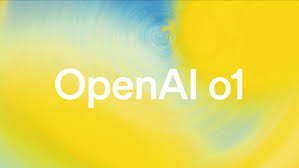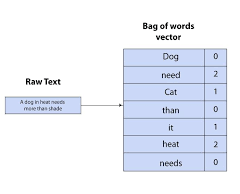OpenAI has firmly established itself as a leader in the generative AI space, with its ChatGPT being one of the most well-known applications of AI today. Powered by the GPT family of large language models (LLMs), ChatGPT’s primary models, as of September 2024, are GPT-4o and GPT-3.5.
In August and September 2024, rumors surfaced about a new model from OpenAI, codenamed “Strawberry.” Speculation grew as to whether this was a successor to GPT-4o or something else entirely. The mystery was resolved on September 12, 2024, when OpenAI launched its new o1 models, including o1-preview and o1-mini.
What Is OpenAI o1?
The OpenAI o1 family is a series of large language models optimized for enhanced reasoning capabilities. Unlike GPT-4o, the o1 models are designed to offer a different type of user experience, focusing more on multistep reasoning and complex problem-solving. As with all OpenAI models, o1 is a transformer-based architecture that excels in tasks such as content summarization, content generation, coding, and answering questions.
What sets o1 apart is its improved reasoning ability. Instead of prioritizing speed, the o1 models spend more time “thinking” about the best approach to solve a problem, making them better suited for complex queries. The o1 models use chain-of-thought prompting, reasoning step by step through a problem, and employ reinforcement learning techniques to enhance performance.
Initial Launch
On September 12, 2024, OpenAI introduced two versions of the o1 models:
- OpenAI o1-preview: Optimized for sophisticated problems requiring deep reasoning.
- OpenAI o1-mini: A smaller, cost-effective version designed for more general use.
Key Capabilities of OpenAI o1
OpenAI o1 can handle a variety of tasks, but it is particularly well-suited for certain use cases due to its advanced reasoning functionality:
- Enhanced Reasoning: o1 models are optimized for complex STEM-related problems, particularly in fields like science, engineering, and mathematics.
- Brainstorming and Ideation: o1’s advanced reasoning makes it excellent for generating creative solutions and ideas across various disciplines.
- Scientific Research: The models can assist in complex research tasks, such as annotating cell sequencing data and solving intricate mathematical equations, making them ideal for scientific applications.
- Coding: With strong performance in coding benchmarks like HumanEval and Codeforces, o1 models excel in generating and debugging code and building multi-step workflows for developers.
- Mathematics: o1’s mathematical prowess is demonstrated by its superior performance in competitions such as the International Mathematics Olympiad (IMO) and the American Invitational Mathematics Examination (AIME).
- Self-Fact-Checking: The o1 models can self-verify their outputs, improving the accuracy of their responses.
How to Use OpenAI o1
There are several ways to access the o1 models:
- ChatGPT Plus and Team Users: As of September 12, 2024, both o1-preview and o1-mini are available to Plus and Team users via the model picker in ChatGPT.
- ChatGPT Enterprise and Education Users: OpenAI has committed to making o1 models available to Enterprise and Education users by September 19, 2024.
- ChatGPT Free Users: At launch, o1 models were not available to free users, though OpenAI plans to introduce o1-mini access in the future.
- API Developers: Developers can access both o1-preview and o1-mini through OpenAI’s API.
- Third-Party Services: Platforms like Microsoft Azure AI Studio and GitHub Models have integrated OpenAI’s o1 models for user access.
Limitations of OpenAI o1
As an early iteration, the o1 models have several limitations:
- Feature Gaps: At launch, the o1 models do not support web browsing, image processing, or file uploads.
- API Restrictions: Some functionalities, such as function calling and streaming, are unavailable. Chat completion parameters are also limited during the preview phase.
- Response Time: The o1 models take longer to generate responses due to their more thorough reasoning processes.
- Rate Limits: Initially, o1-preview was capped at 30 messages per week for Plus and Team users, while o1-mini was limited to 50 messages per week. These limits were increased on September 16, 2024.
- Cost: o1 models are more expensive than GPT-4o, making them a premium option for API users.
How OpenAI o1 Enhances Safety
OpenAI released a System Card alongside the o1 models, detailing the safety and risk assessments conducted during their development. This includes evaluations in areas like cybersecurity, persuasion, and model autonomy. The o1 models incorporate several key safety features:
- Chain-of-Thought Reasoning: By reasoning through problems step by step, o1 models reduce errors and follow safety guidelines more rigorously.
- Jailbreak Resistance: The o1 models have stronger resistance to jailbreak attempts than previous models, scoring highly on benchmarks like the Strong Reject test.
- Content Policy Adherence: On the Challenging Refusal Evaluation, o1-preview achieved a “not unsafe” score of 0.934, a notable improvement over GPT-4o.
- Bias Mitigation: The o1 models also show improvements in demographic fairness, particularly in avoiding biased decision-making based on race, gender, and age.
- Legible Safety Monitoring: o1 models provide transparent reasoning chains, helping to monitor safety more effectively. In testing, only 0.79% of responses were flagged as potentially deceptive.
GPT-4o vs. OpenAI o1: A Comparison
Here’s a side-by-side comparison of GPT-4o and OpenAI o1:
| Feature | GPT-4o | o1 Models |
|---|---|---|
| Release Date | May 13, 2024 | Sept. 12, 2024 |
| Model Variants | Single Model | Two: o1-preview and o1-mini |
| Reasoning Capabilities | Good | Enhanced, especially in STEM fields |
| Performance Benchmarks | 13% on Math Olympiad | 83% on Math Olympiad, PhD-level accuracy in STEM |
| Multimodal Capabilities | Text, images, audio, video | Primarily text, with developing image capabilities |
| Context Window | 128K tokens | 128K tokens |
| Speed | Fast | Slower due to more reasoning processes |
| Cost (per million tokens) | Input: $5; Output: $15 | o1-preview: $15 input, $60 output; o1-mini: $3 input, $12 output |
| Availability | Widely available | Limited to specific users |
| Features | Includes web browsing, file uploads | Lacks some features from GPT-4o, like web browsing |
| Safety and Alignment | Focus on safety | Improved safety, better resistance to jailbreaking |
OpenAI o1 marks a significant advancement in reasoning capabilities, setting a new standard for complex problem-solving with LLMs. With enhanced safety features and the ability to tackle intricate tasks, o1 models offer a distinct upgrade over their predecessors.













